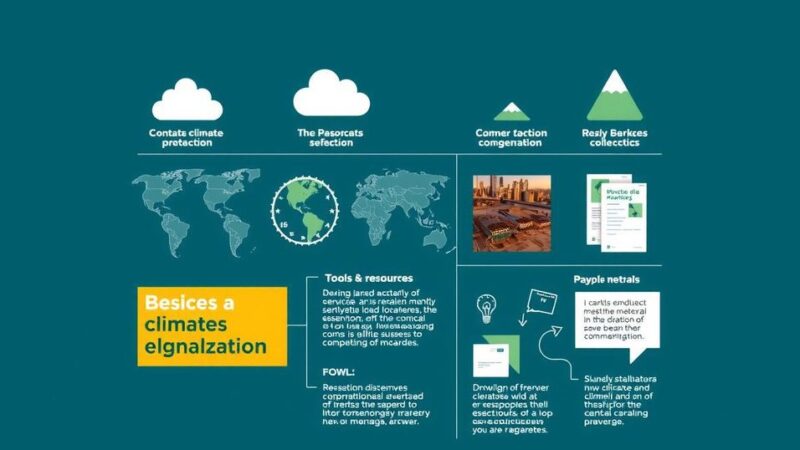In wake of unprecedented climate impacts, the U.S. Government launches “Resilience at Scale” to enhance infrastructure resilience in developing countries. This initiative advocates for a systems approach to infrastructure planning, recognizing that interconnected systems must be robust to ensure continued service delivery amidst climate challenges. Collaborative efforts across governmental agencies aim to support economic development and meet climate adaptation goals.
The United States Government (USG) is stepping up its efforts to build climate-resilient infrastructure systems in response to the growing impacts of climate change, particularly in developing countries. The year 2023 marked a historical peak in average global temperatures, exceeding 1.5°C, and was characterized by an unprecedented number of extreme weather events, including Cyclone Freddy and severe hurricanes in the U.S. These climatic conditions are now recognized as existential threats, requiring immediate action to protect communities and economies. In recognition of these urgent challenges, the Millennium Challenge Corporation (MCC) and the U.S. Agency for International Development (USAID) have launched the report “Resilience at Scale.” This strategic initiative emphasizes a paradigm shift from focusing on individual infrastructure assets to adopting a systems approach. By assessing entire systems, such as energy supply and transportation networks, more strategic investments can be made that bolster resilience against climate impacts. This approach ensures that vital services remain operational even when individual infrastructure components are compromised. “Resilience at Scale” is integral to the President’s Emergency Plan for Adaptation and Resilience (PREPARE), which seeks to provide assistance to over half a billion individuals in developing countries by 2030. This initiative fosters collaboration across various U.S. governmental agencies, including the U.S. Army Corps of Engineers and the National Oceanic and Atmospheric Administration, to develop robust infrastructure that supports economic development and enhances global stability. One of the key tenets of the report is the necessity of a coherent strategy that includes consistent evaluation of infrastructure systems for resilience, which ultimately supports broader development objectives such as increased market access, job creation, and sustainable energy solutions. The USG is committed to fostering partnerships with countries and private entities to achieve these ambitious climate resilience goals.
The ongoing challenges posed by climate change necessitate robust adaptations, particularly concerning infrastructure in low- and middle-income countries that bear the brunt of its impacts. The increasing frequency and severity of extreme weather events underscore the demand for a transformative approach in how infrastructure is conceived, designed, and executed. Traditional models of development often fail to consider the interconnected nature of critical systems, leaving communities vulnerable to cascading failures. Thus, there is a pressing need for a collaborative framework that prioritizes resilience in the face of climate uncertainty.
In summary, recognizing the imperative of climate adaptation, the U.S. government is focusing on enhancing the resilience of critical infrastructure through a comprehensive systems approach. Initiatives like “Resilience at Scale” not only address immediate infrastructural needs but also pave the way for sustainable economic growth and stability in developing nations. By promoting collaboration and innovative strategies, the USG aims to equip vulnerable communities for the challenges posed by an unpredictable climate, ultimately fostering a more resilient global future.
Original Source: www.mcc.gov






